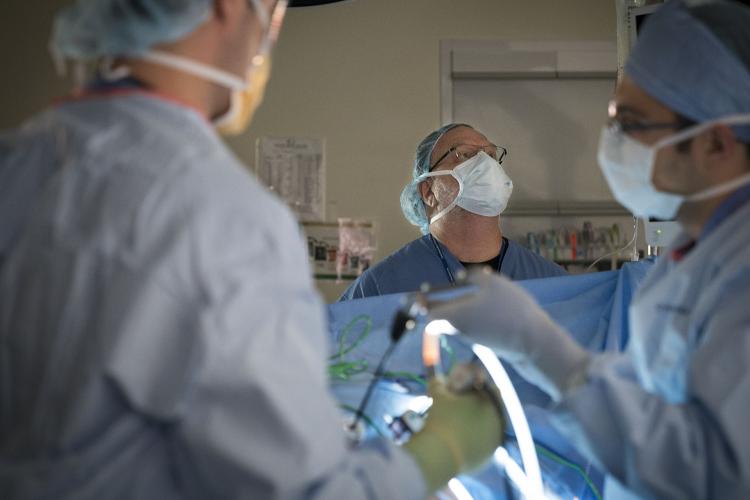
Nurses are on the front line of the battle against surgical site infections. Their attention to detail can be the key to protecting patients from unwanted, potentially life-threatening complications.
“When you’re a nurse, a big part of the job is being a safety advocate for your patients,” said Eleena Bower, Director of Infection Control at JPS Health Network. “Being sure you are your patient’s best safety advocate is the way to ensure that they get the best, evidence-based, high-quality care possible.”
Here are five practices nurses can be mindful of every day to prevent surgical site infections, according to Bower and JPS Director of Nursing Education Renette Toliver:
Make sure hands and tools are clean. It’s important to stick to hand hygiene protocol every single day to make sure bacteria is kept at bay. According to the Centers for Disease Control, people constantly touch their eyes, nose and mouth all day without thinking about it which can lead to germs being transferred because you believe your hands are clean when they’re really not. Wipe off equipment between cases because those hands that touch our eyes, nose and mouth also touch table tops, counters, rails, door knobs and even medical instruments. To keep your hands clean, first thoroughly wash them, then make sure they aren’t touching dirty surfaces.
Antibiotic timing. Toliver said research indicates that it’s not just THAT antibiotics are administered, it’s also WHEN they’re administered that’s important for the patient’s safety. Patients need to be given the correct dose according to their weight 30-60 minutes before surgery starts to insure their antibiotics have been processed by their body and are at peak performance during surgery.
Prevent hypothermia. Patients must be kept at the correct temperature both during and immediately after surgery to prevent perioperative hypothermia. When a person who is being operated on has their body temperature fall to 96.8 degrees or lower, not only are they statistically more likely to develop a surgical wound infection, they are also more vulnerable to complications including cardiac events and increased bleeding. They also face longer recovery times and lengthier, more expensive hospital stays.
Make sure the patients is prepared to do their part. That includes using Chlorhexidine wipes in the morning two days before, one day before and the day of their surgery – and then each morning for two days after. Patients may think they’re helping out by shaving the site of their surgery before their operation. But shaving causes microscopic damage to the surface of the skin which bacteria can sneak into, Bower said. So, while they’re just trying to help out, it’s safer for patients to wait to have hair removed with clippers after they’ve arrived at the hospital. Patients must also be advised about how to care for their wound after they’re discharged, including keeping their hands clean when they change their dressing – and leaving the dressing alone except when it’s time for it to be changed.
Controlling blood sugar. A steady glucose level is important for the healing process in surgical patients, Toliver said. Perioperative hyperglycemia increases risk of postoperative mortality, and cardiovascular, respiratory, neurologic, and infectious morbidity. Diabetic patients can face glucose fluctuation due to required fasting prior to surgery if they’re not carefully monitored and treated. But non-diabetics are also subject to the hypoglycemia caused by stress on their body when they’re traumatically injured or chronically ill. Patients should be educated about proper nutrition and how to keep their glucose level below 150 for 30 days prior to their operation to maximize their ability to heal quickly and avoid a surgical site infection.
“It’s been estimated by the CDC that approximately 50 percent of surgical site infections are preventable,” Bower said. “Nurses can make a real difference by doing these things every day to protect their patients.”
